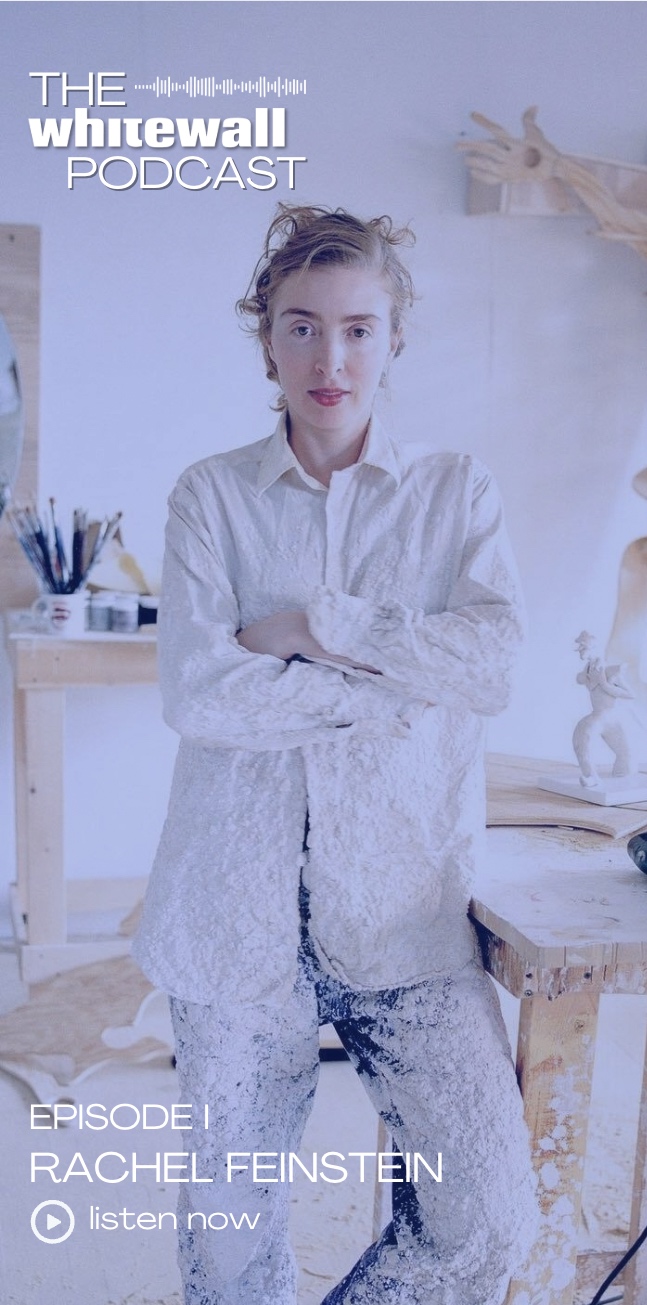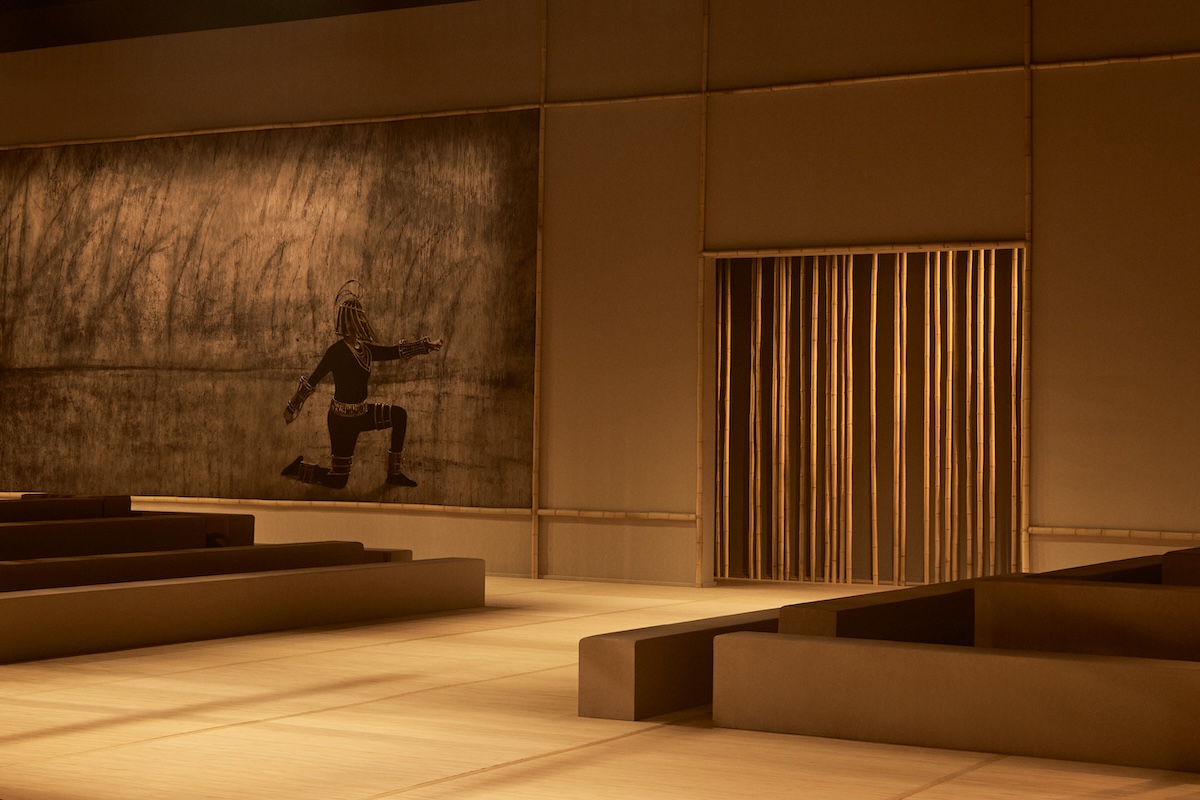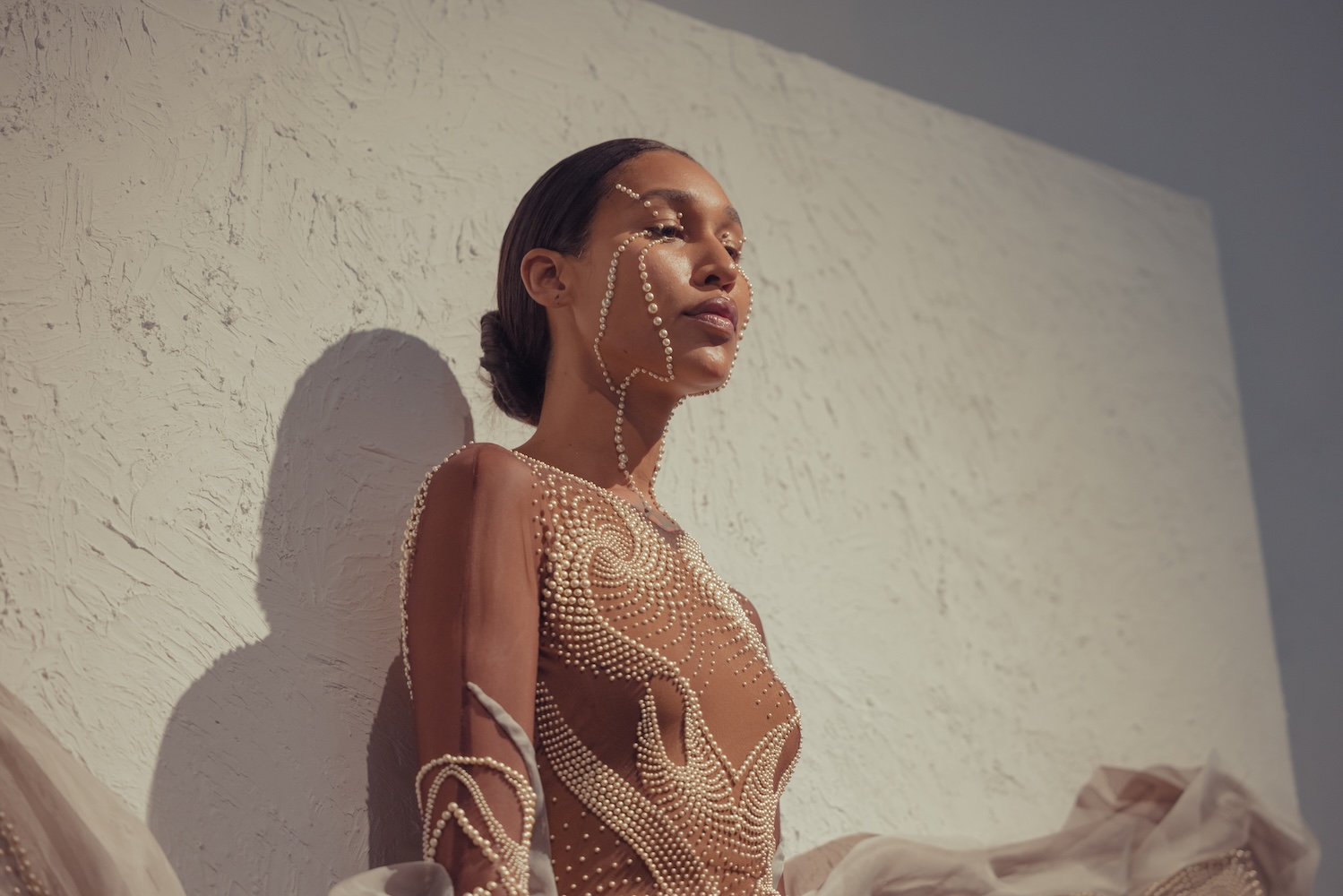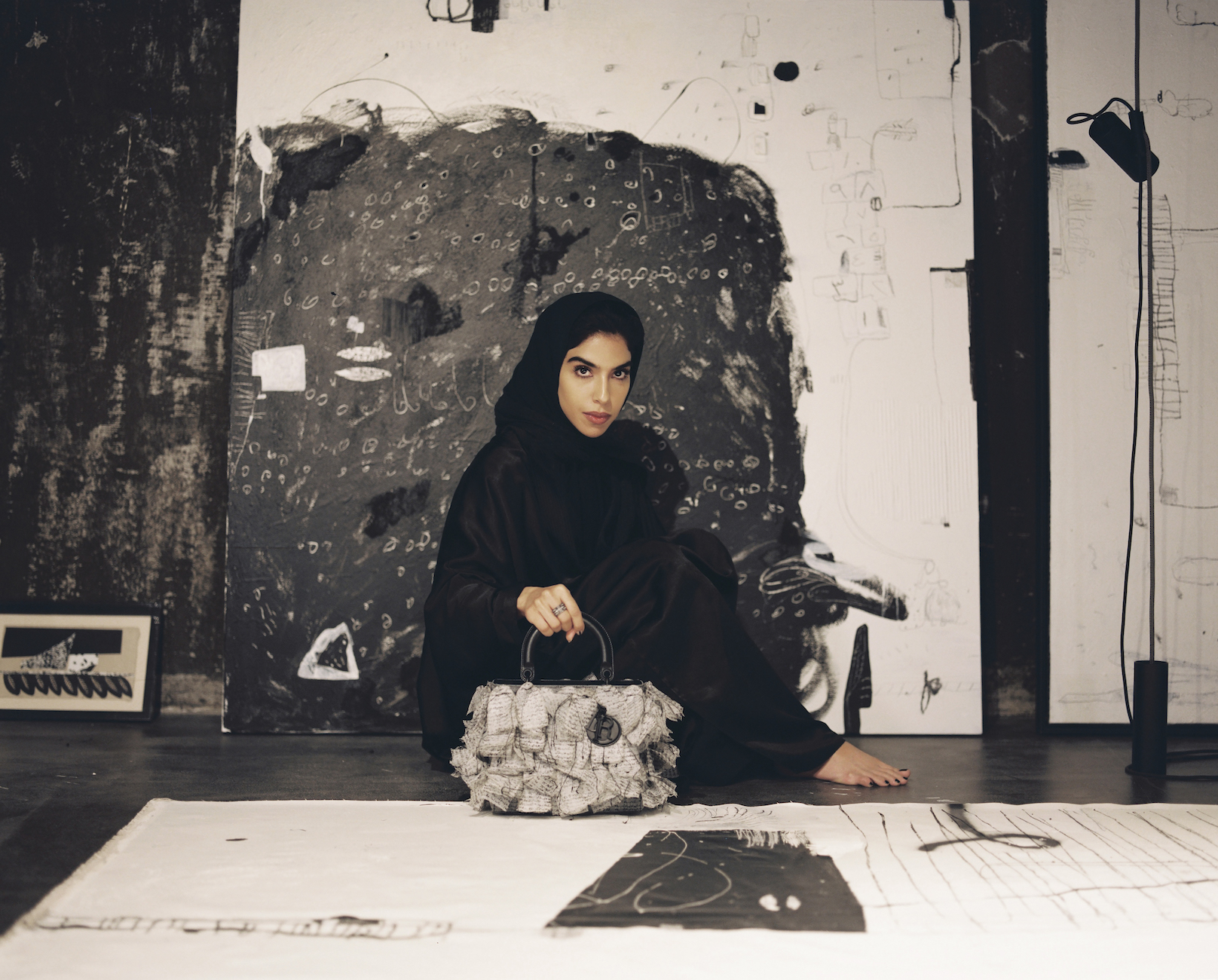A tree roped with vines and snaking roots grew amid the stairwell of 30 avenue Montaigne—Christian Dior’s historic address. Black-and-white imagery of smoke, clouds, water, and sky covered the location’s 18th-century walls, floors, and ceilings. Through this dark, ancestral dream, models paraded a collection in nearly all black, styled with black veils covering slick, tight chignons.
Such was the stage for Maria Grazia Chiuri’s dramatic show last July in Paris for Dior Haute Couture Fall/Winter 2019–20. The creative director collaborated with the artist Penny Slinger on the immersive scenography, as well as the last surrealist look—a golden garment shaped like the iconic house. Decisive moments of color did occur, as well as a white top reading, “Are Clothes Modern?” (a reference to Bernard Rudofsky’s exhibition of the same name), which reminded us of Chiuri’s debut collection, which began with a T-shirt that stated, “We should all be feminists.”
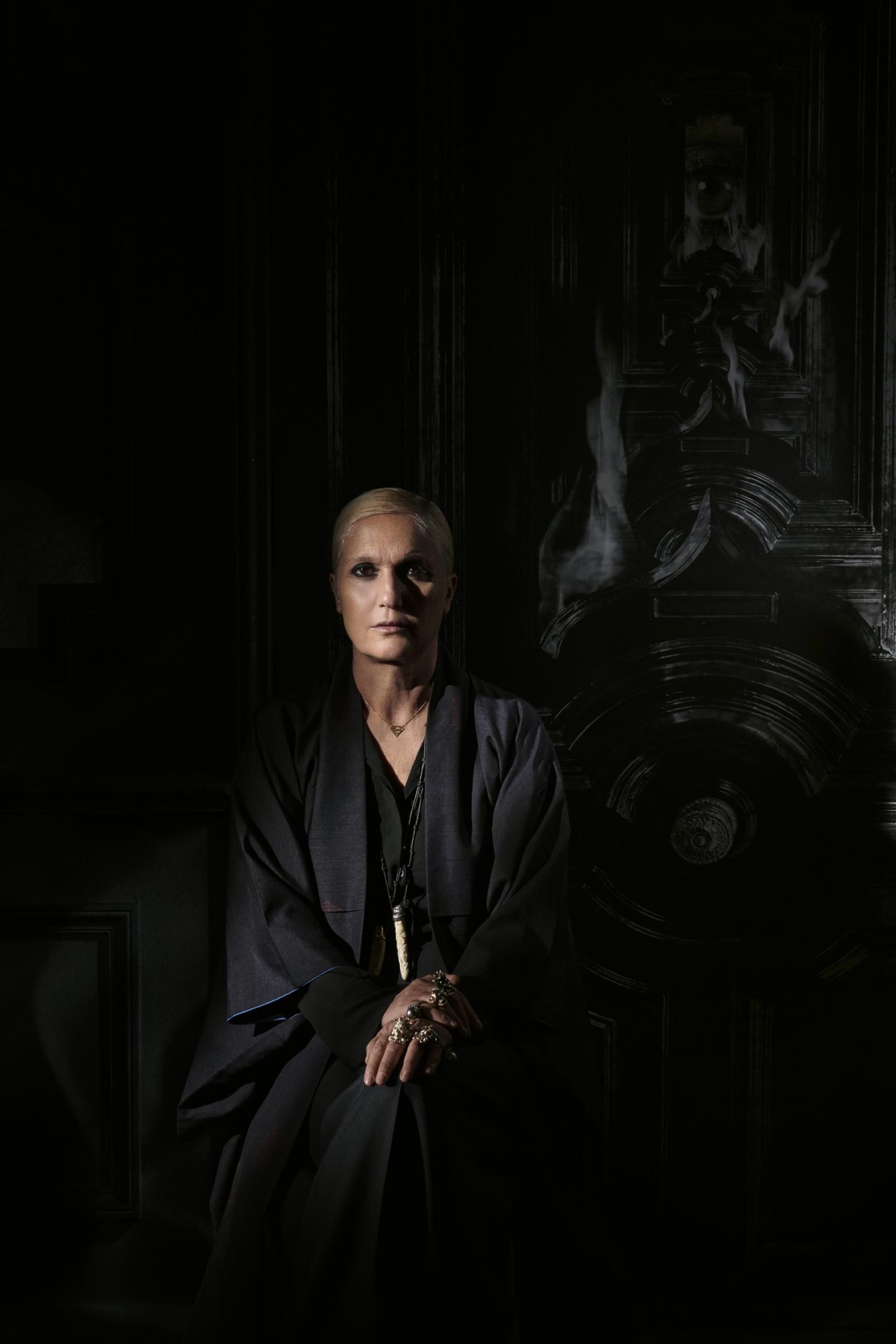 © Camille Vivier.
© Camille Vivier.
Chiuri’s choices are timely, but purposeful. She understands that her role comes with great responsibility—toward both the heritage of Christian Dior and the women for whom she’s designing. Her work speaks to the resilience, power, and integrity of femininity. And she chooses to collaborate with female artists, like Slinger, who continue to challenge the patriarchy.
Whitewall spoke with Chiuri about her vision, her activism, and her inclusive message for young women.
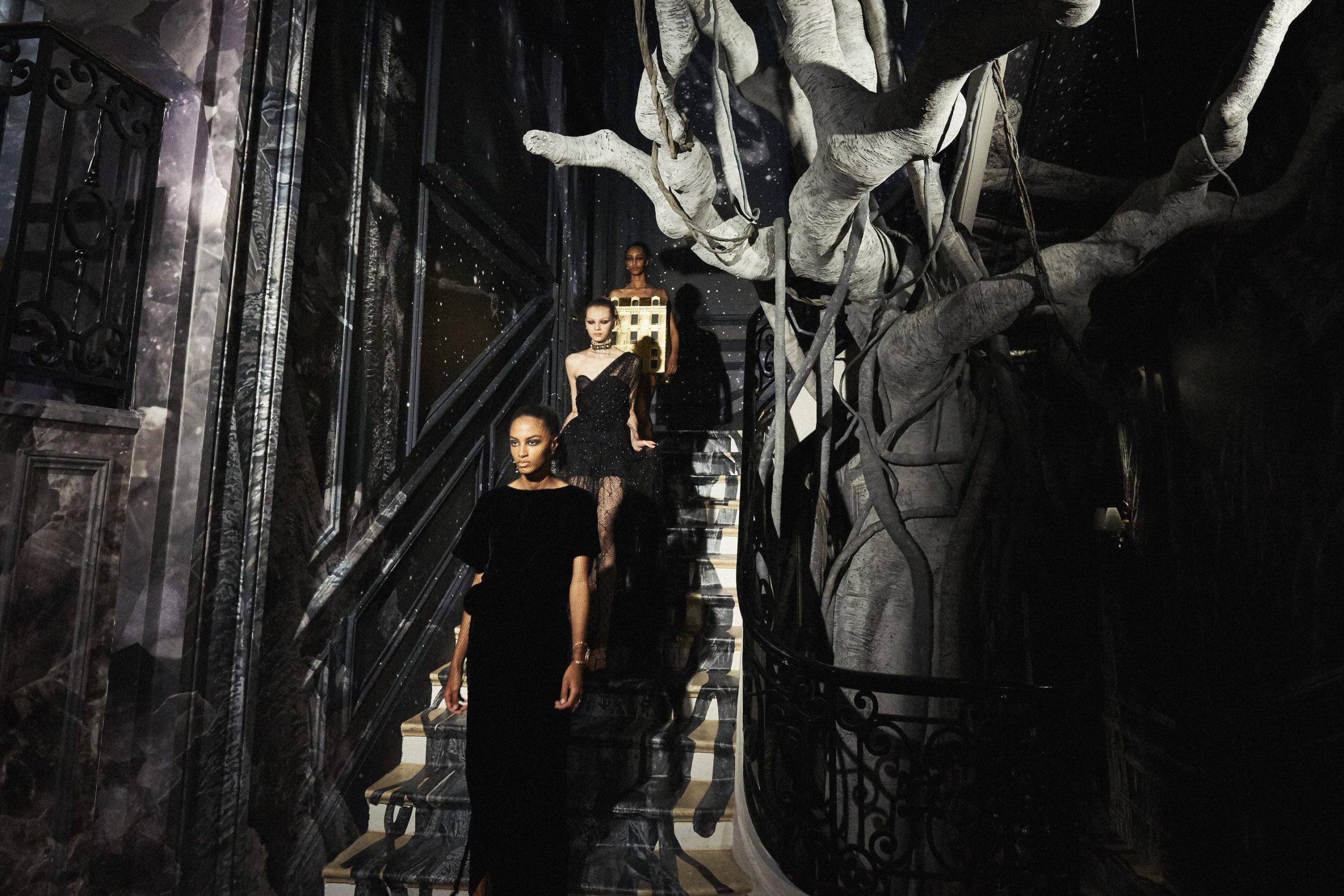 Dior haute couture Fall/Winter 2019-20, photo by © Adrien Dirand, courtesy of Dior.
Dior haute couture Fall/Winter 2019-20, photo by © Adrien Dirand, courtesy of Dior.
WHITEWALL: How did you arrive at Bernard Rudofsky’s “Are Clothes Modern?” exhibition as a point of inspiration?
MARIA GRAZIA CHIURI: The ideas that Bernard Rudofsky developed for the 1944 exhibition “Are Clothes Modern?” were eye-opening for me, because they got me thinking about a different definition of couture that strays from the traditional view. I stumbled upon him by chance after having seen his gorgeous Bernardo sandals. Then I read and fell in love with his book The Unfashionable Human Body. It sparked my curiosity and motivated me to dig deeper into his work. His exhibition at the MoMA was a complex operation that reflected upon clothing and modernity, and I thought that theme was still pertinent today.
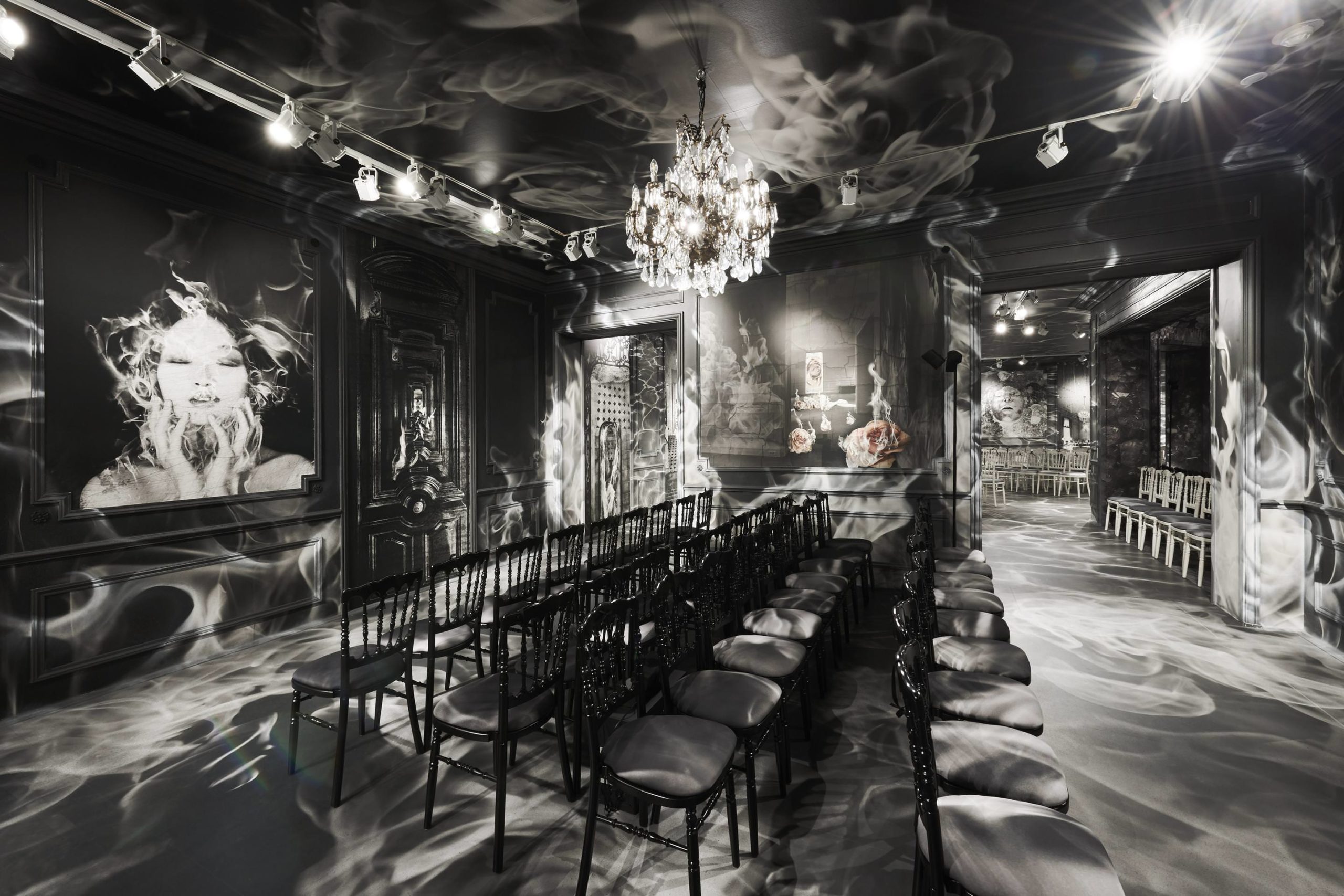 Dior haute couture Fall/Winter 2019-20, photo by © Adrien Dirand, courtesy of Dior.
Dior haute couture Fall/Winter 2019-20, photo by © Adrien Dirand, courtesy of Dior.
WW: The collection is almost entirely in black with rare punctuations of color. What challenges came with creating a collection mostly in black? What discoveries?
MGC: I love black and, personally, am very comfortable wearing it. And Christian Dior loved black, too—so much so that he wrote in The Little Dictionary of Fashion, “I could write a whole book on black.” That is why I decided to shape the entire 2019–2020 Fall/Winter Haute Couture collection around the thousand souls of black.
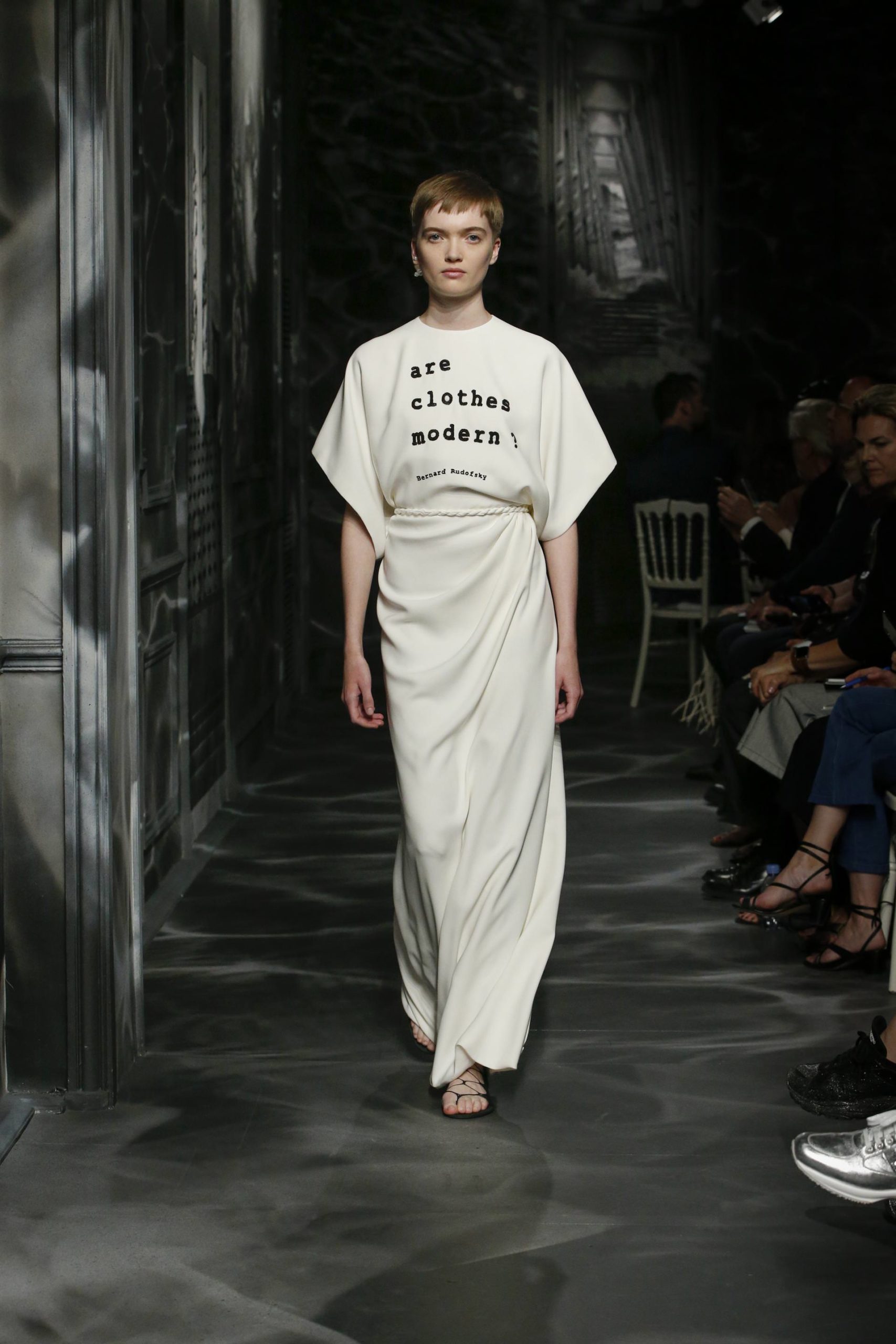 Dior Haute Couture Fall/Winter 2019-20
Dior Haute Couture Fall/Winter 2019-20Photo by © Adrien Dirand
Black is both difficult and stimulating, because it has not one but many identities, ever-changing depending on the material: It hides all its mysterious and multiform force in grainy tweeds, interwoven leather, or sumptuous velvet, mixed with netting and feathers. It’s incredibly light and stratified in the veils that cast intriguing patterns on skin. Black is always a new discovery: It is symbolic and powerful, ancestral and magical, extravagant and sacrificial.
WW: What does the caryatid represent to you? How did you want to translate that into a collection?
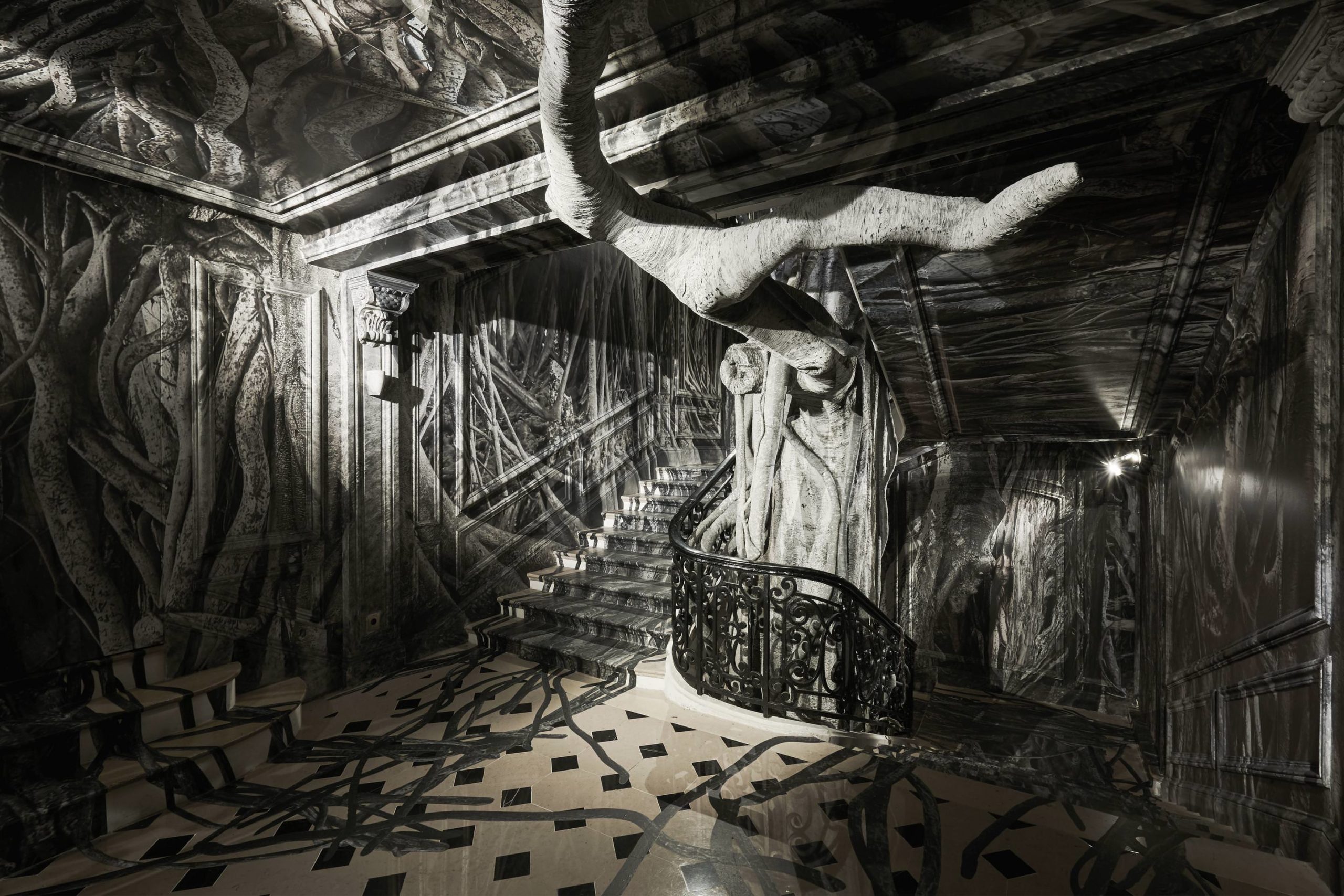 Dior Haute Couture Fall/Winter 2019-20
Dior Haute Couture Fall/Winter 2019-20Photo by © Adrien Dirand
MGC: Caryatids are architectural elements that strike me above all for their symbolic value. They are female figures that become structural parts of the architecture, from ancient Greek temples to many buildings today in Paris. So I decided to watch Agnès Varda’s film Les Dites Cariatides (“The So-Called Caryatids”), and once again it seemed natural to me to reflect upon women’s role in society: silent pillars, great supports, and the embodiment of incredible resilience.
These are the values I wanted to convey in the collection, through a single, compelling white dress that opened the show. A dress that takes shape only when it comes into contact with the body that dons it—one of the precepts of drapery, the primary feature of clothing in antiquity—and that brings us back to the question, “Are clothes modern?” It is designed to get us thinking about the value of clothing and fashion in society.
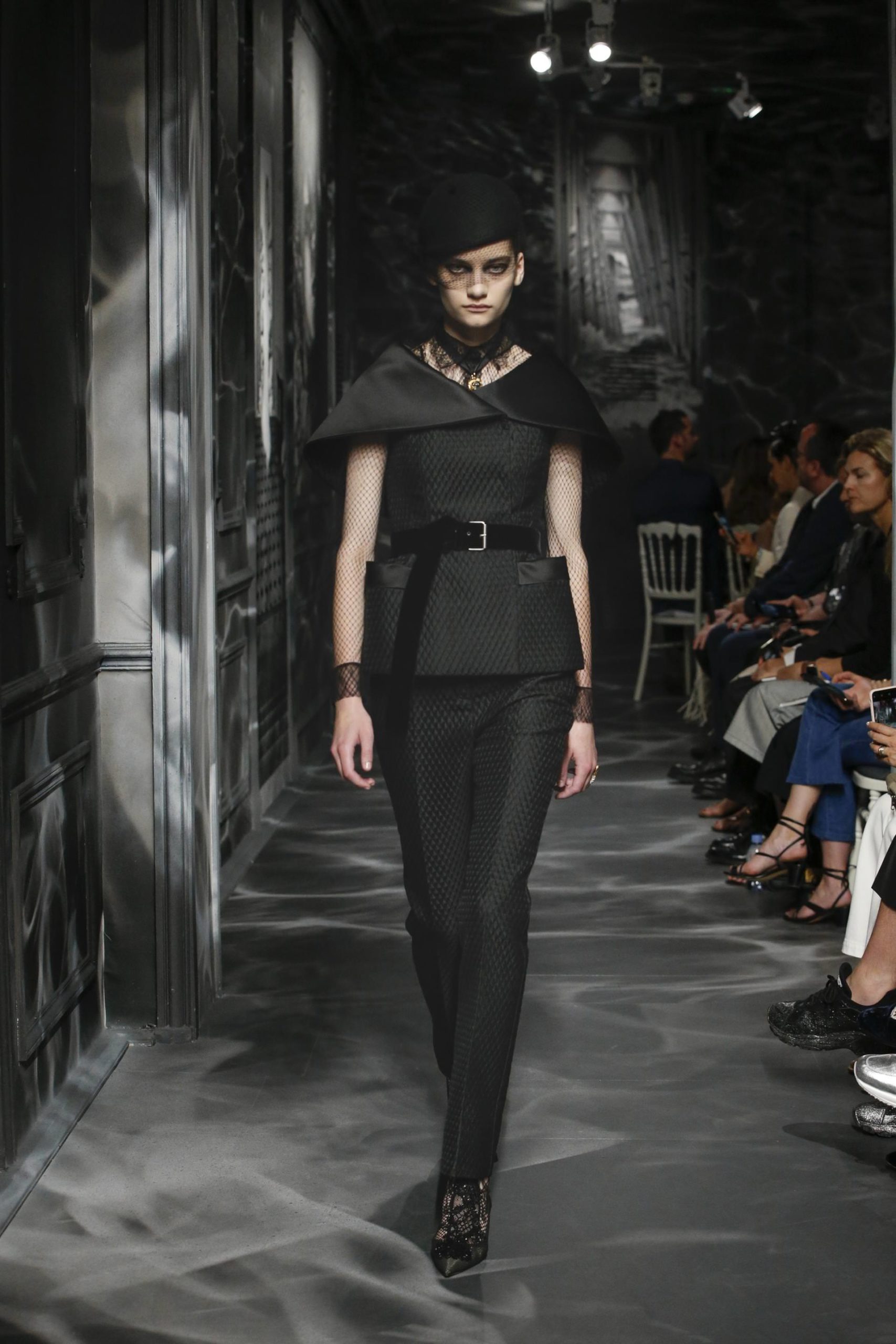 Dior Haute Couture Fall/Winter 2019-20
Dior Haute Couture Fall/Winter 2019-20Photo by © Adrien Dirand
WW: What relationship do you see between femininity and architecture?
MGC: Architecture is a discipline, a concept that has as its center man and his relationship with the space around him. Femininity is a way of being in things, an attitude, one of the ways in which we inhabit the world we live in. In that sense, it is very close to the idea of architecture. Clothes represent the connection between architecture and femininity, serving as the architecture that is closest to the body, and as fashion, that makes the connection between wearing—that is, that which we don, not only clothing, but also emotions—and living concrete and contemporary.
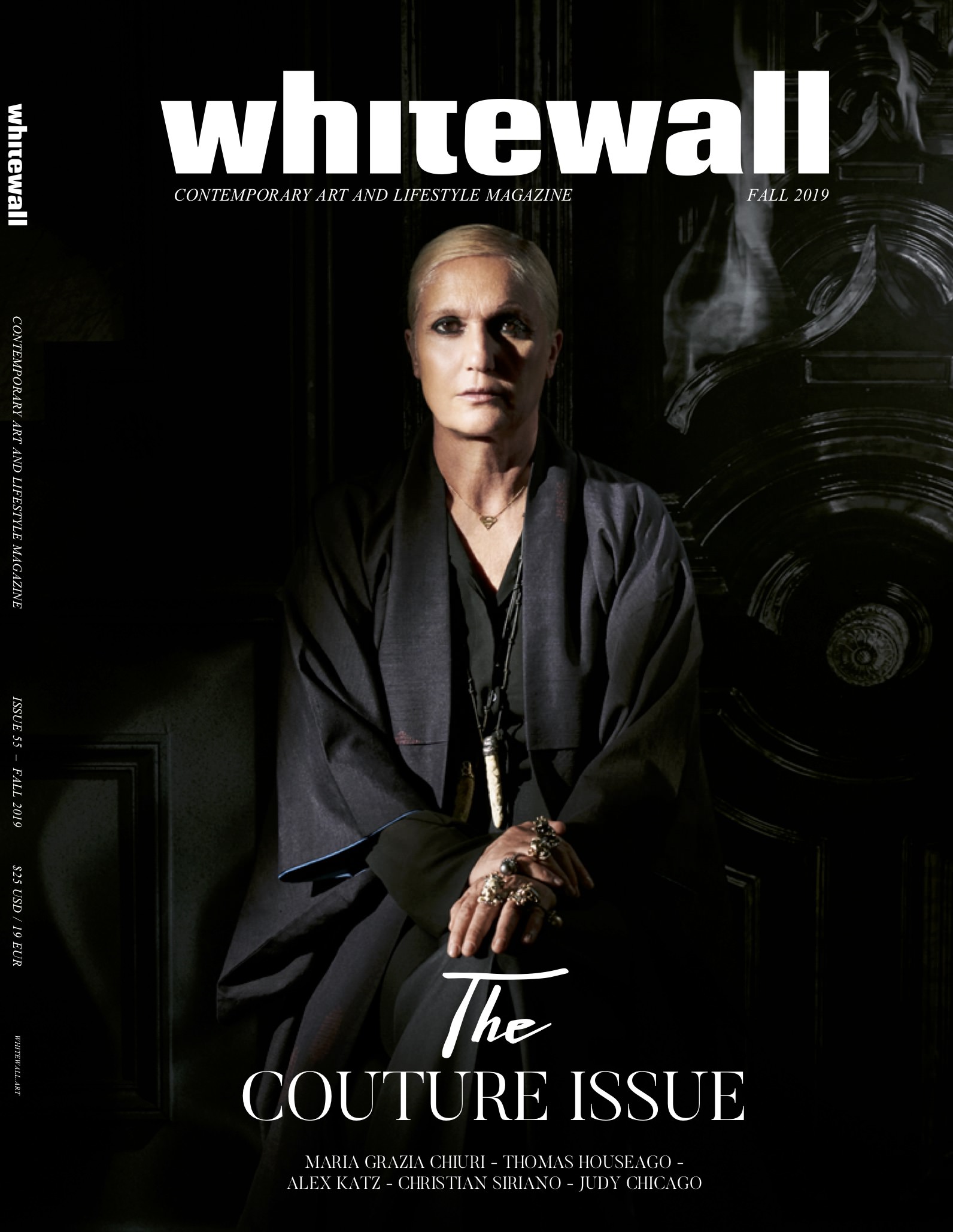 Whitewall’s Fall 2019 Couture Issue Cover featuring Maria Grazia Chiuri.
Whitewall’s Fall 2019 Couture Issue Cover featuring Maria Grazia Chiuri.
WW: Feminism has been at the forefront of your time at Dior, starting with your first collection, which included the T-shirt “We should all be feminists.” And for the Fall/Winter 2019–2020 collection you collaborated with feminist artist Penny Slinger. How did you initially connect with her and her work?
MGC: I really like Penny Slinger’s work, because it stems from the experiments of Surrealism and Dadaism, two artistic currents that I love. Her works are all the stronger because of her activism, her denouncing of the patriarchy, and her thinking about women’s emancipation through the body, desire, and dreams—everything I was looking for to create the setting of this couture collection, linked to the infinite possibilities of the body that are concrete and magic. That is why I reached out to her, but also to pursue what we are doing here at Dior with extraordinary artists and performers, who enrich each collection with their interpretations of our work.
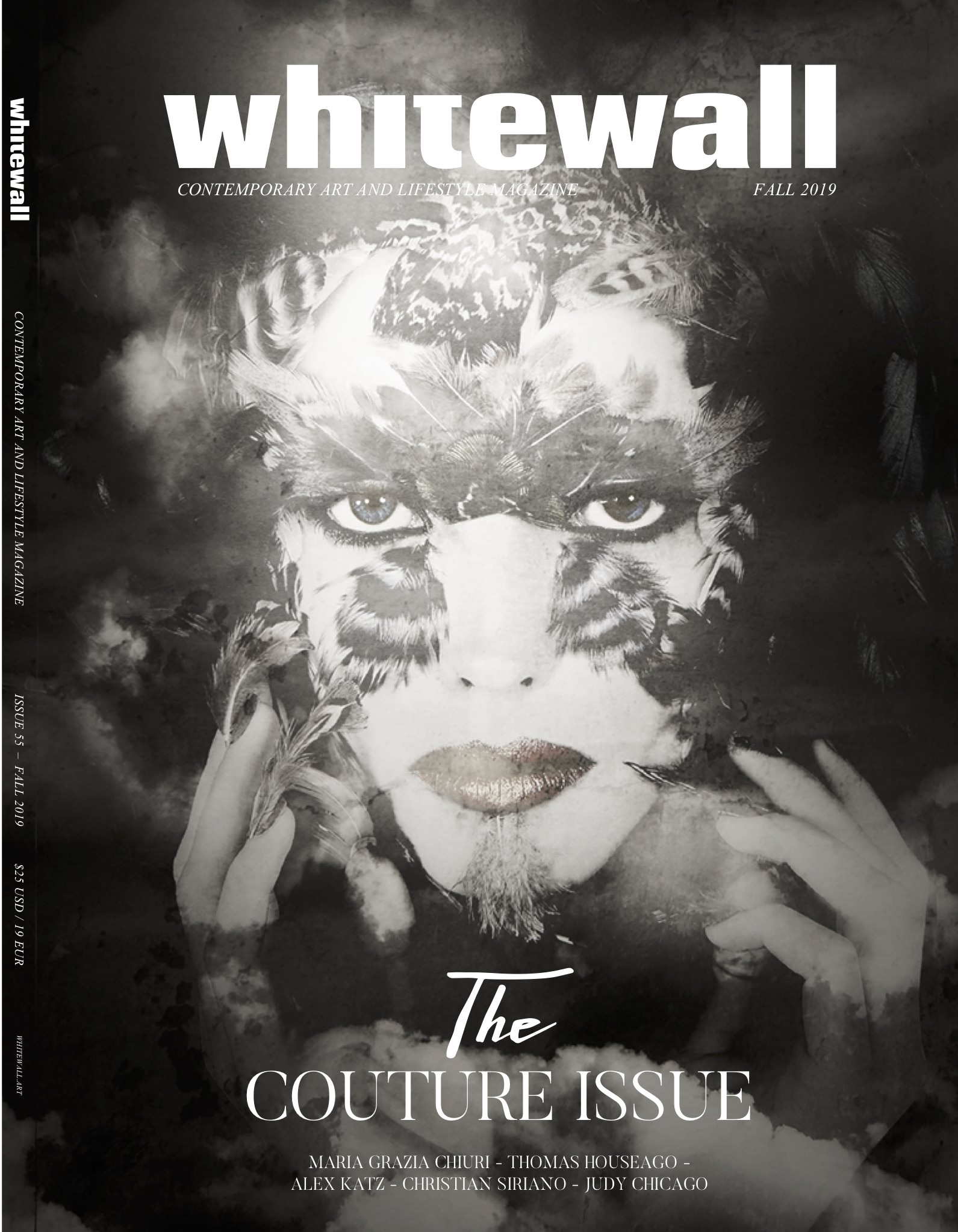 Whitewall’s Fall 2019 Couture Issue Cover featuring Penny Slinger.
Whitewall’s Fall 2019 Couture Issue Cover featuring Penny Slinger.
WW: How would you describe the collaborative process and connection with Slinger?
MGC: Working with Penny was very stimulating, because as we got to know each other we realized that we think the same way about a lot of things. I asked Penny to come to the historic headquarters at 30 avenue Montaigne, where I lived and worked when I first came to Dior, but which I left for a new place, because I wanted the fruits of her labor—defined by the stark contrast between black-and-white, primary elements, ancestral forces, a harsh and mysterious nature inhabited by feminine creatures—to become part of a sort of rite of passage. Penny is also the author of the last work presented in the show: a magic and “unwearable” reinterpretation of the seat of the Dior fashion house, a real and true manifesto of the marriage between fashion and architecture, the perfect return to the link between wearing and living.
WW: Slinger describes herself as a collage artist, bringing together pieces of reality into new reality. Do you relate to that in your own creative approach?
MGC: I believe that the work of a creative director is very similar to that of a curator: one who manages to strike a balance between all the different parts of a project thanks to their own vision. So more than collage, I would speak of shaping, of a continuous movement between micro and macro: guiding the parts toward a unitary vision in a perfect work of synthesis.
WW: What does the starting point typically look like for each collection, or is it different every season?
MGC: Every collection starts with a precise idea, albeit guided by instinct and passion, imbued with curiosity. A phrase, a book, a work of art, or a person drives me to dig deeper and to discover, and that gets kneaded into the creative process and translated into the language of fashion, always in a different way depending on the project. However, everything can change over the course of the project. And that is the most beautiful thing: There is no certainty. It’s a journey with an unknown destination until the moment you arrive.
WW: How does your approach for a couture collection compare to your approach for a ready-to-wear collection?
MGC: The approach definitely changes, especially when it comes to thinking about objects. While ready-to-wear is a more open domain, which aims to reach a wider audience, couture is the fruit of a conceptual awareness, one that considers bodies and attitudes individually, viewing them as the sole recipient of each object it conceives and produces. In couture, the point of departure is the nude and incomplete body, and the destination is the body that meets an item of clothing that completes it: a glorification of the construction, the materiality, of garments. The notion of couture is about the extraordinariness of its construction and materiality. The discipline of couture is, paradoxically, the great freedom of being able to continually be a place of experimentation and free expression.
WW: You’ve said that as the first female creative director for Dior, you felt a responsibility. How would you describe that responsibility?
MGC: The visibility of my role causes me to feel the weight of my responsibility toward my audience, who is ever more interconnected and global. I’m thinking especially of the young women, whom I see as our future. To send a positive and inclusive message, to help these young people get to know the stories of those who came before them and of those who are making a difference today, so that they become a source of inspiration to spur them to become agents of change, the new revolution—that is my goal, that is my activism.
WW: What responsibility, in general, do you think the designer has?
MGC: I think that, in general, designers should be more aware of the bodies they are dressing. Physiques are changing, as are the perceptions we have of them. We live in a time when people—and especially women—are nurturing a more intimate and conscious relationship with their own bodies, learning to love themselves more, and perceiving the beauty of each feature that makes them unique. Fashion, in its role as the closest architecture of the body, must be able to provide the right “habitat” for this new awareness: something that satisfies the desires of the mind as much as those, often unexpressed, of the body.
WW: From the beginning, you’ve maintained that it’s important to pay homage to Dior’s history (noting that as a person from Rome, you understand that history exists very much in our present). Why is that so key for the future of Dior?
MGC: The Dior fashion house has succeeded in staying relevant over a long period, peppered with revolution and social and cultural transformations that have sometimes been drastic, by reinventing itself and constantly building its identity around femininity and its complexities. This is mainly because the codes have remained at the core of the Dior project, constantly brought up to date and reinterpreted in light of the times and fashion trends. It is important to respect the past, because you can only imagine the future if you know what came before it.








